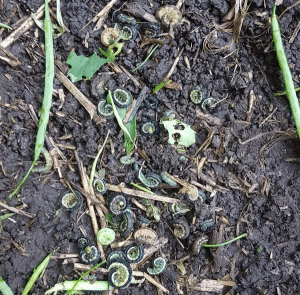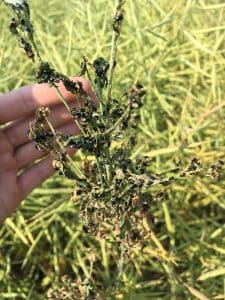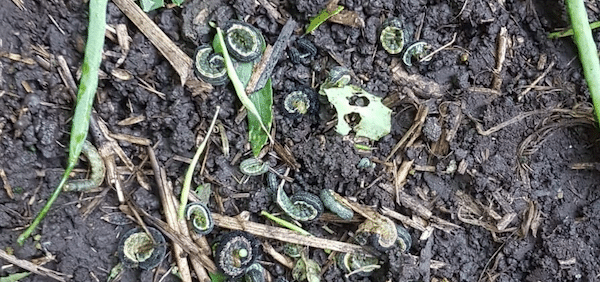Insect threats are generally low across the Prairies right now, but it still helps to check. If spraying is necessary, make sure the chosen product has an appropriate pre-harvest interval.
Bertha armyworm. As predicted by moth traps, the Peace region has fields at thresholds. Beyond the Peace, a few fields here and there have been sprayed. Do proper scouting, as outbreaks can be isolated to specific fields. If numbers are at 10-15 per square metre (which is still below thresholds), check again to make sure. Read more for links to 2019 trap reports, risk areas and scouting tips.

Flea beetles. Next generation adults are emerging (these are the ones that will overwinter to attack seedlings next spring). Flea beetles feeding on canola leaves and pods are unlikely to cause an economic loss. Entomologists have not set thresholds for late season flea beetle feeding, but it’s generally believed that numbers have to be very high — perhaps 100 per plant — before economic losses occur. You may also note that flea beetles can be highly variable at this time of year, with high numbers on some plants and next to none on others. Often they can found concentrated on plants along the headland that have greener branches, so be sure to scout into the field when assessing the impact. Once green material is gone, from within the canopy, watch for pod feeding. Read more

Grasshoppers. The nominal threshold for grasshoppers in canola is 8 to 12 per square metre. The higher end of that range may be more appropriate in a typical canola crop as, given a choice, most grasshopper species prefer grass and cereals to canola. Grasshoppers are often at higher numbers at field margins, making a targeted spray possible. But they will migrate across fields, so scout to see where that ‘margin’ ends. Read more
Diamondback moth larvae. We heard of higher numbers in a spot along the Saskatchewan-Alberta border, but this is not generally a significant pest this year. The larvae will feed on pods, causing window paining which will damage seed formation. This is one of the three insects to watch for on canola pods. The others are lygus and bertha armyworm. Read more
